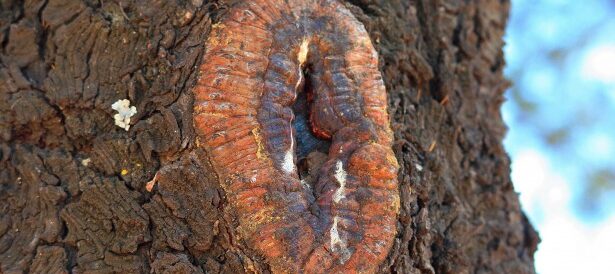Trees are part and parcel of the landscape, as they provide the landscape with shade, beauty and a sense of environmental balance.
But even the best tree may be prone to disease without noticing the first signs when these signs are neglected. The ability to identify the symptoms in time before they progress is the difference between preserving a precious specimen and losing it completely.
Such a guide will minimize the most common signs of diseases, methods of their identification, and the time when professional help is needed.
Why Early Disease Detection Matters for Tree Survival
Trees, like people, respond best to early treatment. When diseases are caught early within the first year of symptom appearance, tree survival rates increase by 70 to 90 percent.
- Acting quickly also saves money. Minor treatment is between 200 and 500 dollars, and treatment of an advanced infection may go over 5,000 dollars.
The spring and fall are the most favorable seasons to be inspected since the leaves are most evidently affected by stress, which is reflected in their change of color and texture.
Without intervention, diseases progress exponentially. A small fungal spot can spread across branches within weeks, weakening the tree’s immune response and attracting pests like borers and aphids.
Beyond ecological loss, untreated trees can reduce property value by up to 15 percent. Regular inspection by a certified arborist is not only smart maintenance, it’s an investment in the longevity of your landscape.
Sign #1 – Leaf Discoloration and Abnormal Patterns
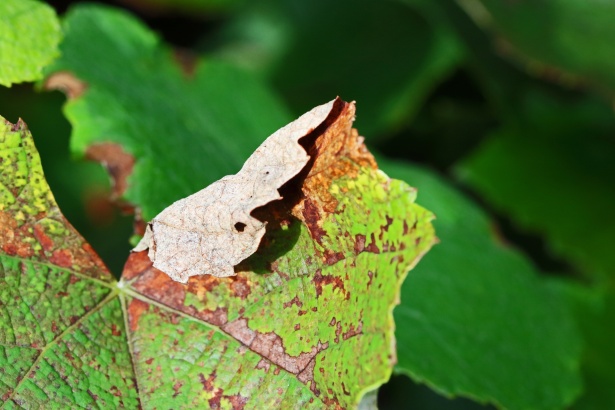
Leaves have become the most expressive characteristic of a tree and the change of leaves has been found to be a sign of health problems.
In cases of discoloration or irregular spotting that is not a normal seasonal occurrence, it is normally an indication of disease.
Yellowing (Chlorosis)
Leaves on the whole turn yellow which is indicative of nutrient deficiencies or damage to roots. In case the leaves turn green along the veins and yellow in between, it is probable that there is an iron/manganese deficiency.
Random yellow areas may have fungi or even viruses especially when the yellowing is spreading so fast.
The chlorosis of spring is more worrying compared to the autumnal changes, because it implies that it is a sign of systemic stresses and not normal dormancy.
Spotting and Blotching
Fungal infections (anthracnose or tar spot) and bacterial leaf blight are commonly indicated by circular spots of brown or black color as well as irregular blotches respectively.
A black, sooty layer would suggest that mould is feeding on insect excretions, and pustules on the underside of the leaves are normally orange, which is a sign of rust fungi.
Premature Browning
In case the ends of the leaves are brown or the edges brown prematurely, there is a possibility of drought, salt, or root damage.
Complete leaf browning in the middle of the season, in particular, usually presupposes vascular disease or extreme blockage of nutrients. Sudden browning across multiple branches can signal fire blight or wilt diseases.
Pattern Recognition
The course of diseases is frequently predictable. When discoloration occurs at the bottom it indicates that it is caused by soil-borne fungi while the top indicates that there are water transport issues or wilt pathogens. One-sided symptoms reveal localized root damage.
Quick Treatment
Eliminate and destroy the infected leaves in time. Use copper fungicide or neem oil on the problem foliage. In the case of nutrient-related chlorosis, the soil should be tested and corrected for pH.
Bacterial infections need to be pruned six inches below the apparent symptoms and the tools need to be sterilized each time the same is cut. Consistent weekly monitoring during growing months helps prevent spread.
Sign #2 – Cankers and Bark Abnormalities
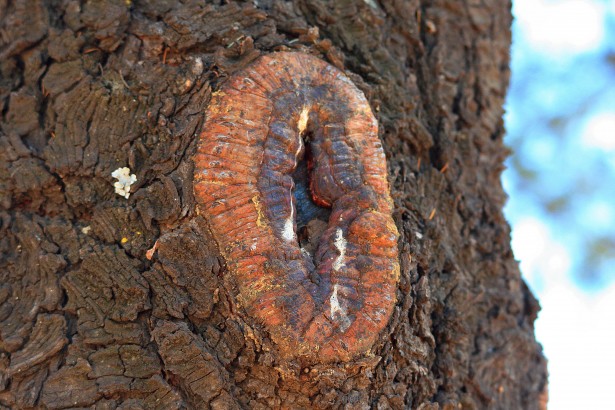
Bark abnormalities are not taken seriously until they develop severe damage, but they are very important at the early stages of the disease.
Sunken, cracked or bleeding patches develop due to the attack of fungi or bacteria on the living bark-cambium.
Canker Identification
A canker may appear as a discolored depression surrounded by cracked bark or raised ridges where healthy tissue tries to contain infection. Bacterial activity is likely to be accompanied by the oozing resin or dark sap.
Examples of common cankers are Cytospora (blood in the resin of conifers), Nectria (circular rings on the trunk of hardwood), and fire blight (deformities on twigs, sunken and discolored).
A combination of several small cankers in the branches of the walnut can be a symptom of Thousand Cankers Disease, which is fatal to the black walnuts.
Severity Indicators
Cankers on the trunk threaten the entire tree by cutting off nutrient flow. Root rot is commonly caused by Phytophthora root rot which can be fatal. Cankers of the branches should be cut at least 6-12inches below the symptoms.
Associated Signs
Bark above the lesion, sparse foliage and fungal growths are all indicative of progressive infection. Insects such as bark beetles often use such weakened spots.
- Quick Treatment: Infected wood cut out well below the canker into healthy wood. There should be a disinfection of tools between cuts with 10 percent bleach. Use fungicides with copper on the edges of the wounds and strengthen the power of the trees with water and mulching. In case trunk cankers have been noticed, then contact a certified arborist as soon as possible. Human intervention could be the sole solution to save the tree.
Sign #3 – Premature Defoliation and Crown Thinning
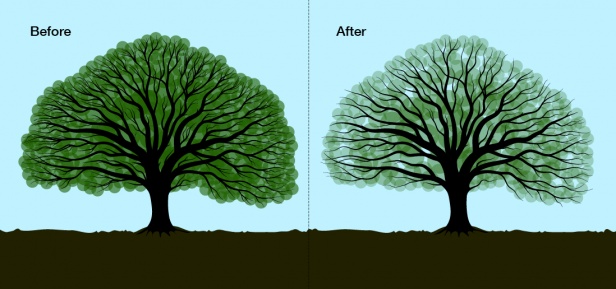
The dropping of leaves that were not expected, or a thinning canopy is a grave warning. Loss of more than 30 percent of foliage density is usually an indicator of extensive stress or ailment.
Defoliation Patterns
Defoliation of spring after leaf-out is likely to be caused by anthracnose or frost. Mid-summer shedding is an indication of wilt diseases, drought or root rot and shedding in the early fall can be due to insect or bacterial action. Periodic withering during the season is typically an indication of fungal spots on the leaves or pest invasion.
Crown Thinning
Thinning of the upper crown suggests blockage of the vessels or root rot; thinning of the lower crown could be normal, but in case of severe thinning, it must be examined. In one-sided thinning the localized soil compaction or root damage may cause it.
Disease Links
Anthracnose results in brown spots and falling of the leaves; apple scab spots the leaf which later defoliates in mid-summer. The oak wilt and Dutch elm disease result in one-sided drying out which, in a few weeks, may result in complete defoliation.
Severity Scale
A 10-25 percent canopy loss calls for close observation. Beyond 40 percent, treatment is urgent. If thinning exceeds 60 percent, structural decline or death is imminent.
Quick Treatment
Water deeply but infrequently to maintain consistent moisture. Avoid fertilizing stressed trees. Remove fallen leaves to reduce next year’s infection risk. If canopy thinning worsens, schedule a professional assessment to determine root or vascular involvement.
Sign #4 – Fungal Fruiting Bodies and Growth Abnormalities
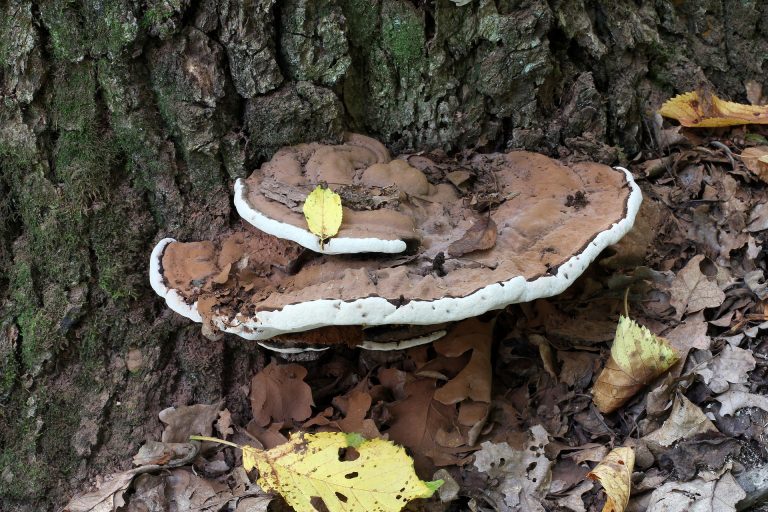
Mushrooms or shelf-like fungi on a tree are signs that the tree is already at an advanced stage of internal decay. The above-ground portion of fungal tissue is only visible as a small portion of the fungus quietly feeds on structural wood internally.
Types of Fruiting Bodies
Shelf fungi, known as conks, emerge from trunks or branches in layered formations. Such common examples are artist conk, turkey tail and chicken of the woods. The appearance of mushrooms around the base is normally a sign of root or collar rot and a typical antagonist is the Armillaria (honey mushrooms).
Other Fungal Evidence
Mildew is indicated by powdery coating, rust by orange pustules and tar spot or bark disease by black crusts. Under bark fungal colonization is hidden in white web-like mycelium.
Growth Deformities
Galls (swollen tissues) may form from infection or insects. Burls’ large woody knots usually indicate stress but are not always fatal. Dense twig clusters, called witches’ brooms, are caused by fungi or mites.
Structural Danger
Trunk conks often mean 40-70 percent internal decay. Root collar fungi signify near-total base rot and storm failure risk. Once visible, decay cannot be reversed; safety evaluation becomes the top priority.
- Quick Treatment: Photograph and document all growths. Consult an ISA-certified arborist for hazard evaluation. While chemical treatments cannot reverse decay, bracing may stabilize valuable trees temporarily. In most cases, removal is recommended for public safety.
Sign #5 – Wilting, Dieback, and Declining Vigor
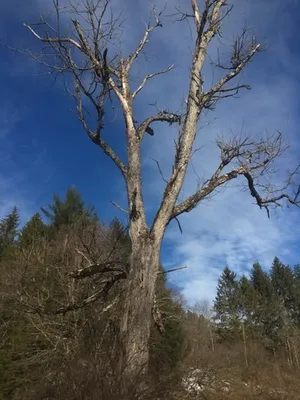
Progressive dieback, the death of branch tips moving inward, signals chronic stress or vascular disease. The pattern and speed of decline reveal much about the cause and severity.
Acute Dieback
In a few days, the fast wilting of the shoots and black discoloration of the shoots indicate fire blight, lightning damage, or herbicide toxicity. Diseases such as Dutch elm and oak wilt affect the oaks and block STWAT, thereby killing trees in a few weeks.
Chronic Dieback
A slower, top-down pattern developing over years points to root damage or long-term stress. Gradual thinning and short annual twig growth indicate ongoing nutrient deficiency or poor soil aeration.
Wilting Behavior
Temporary wilting that recovers overnight implies root disturbance, while persistent wilting under adequate moisture signals infection. When only one side of the tree wilts, localized vascular blockage is likely.
Associated Decline Symptoms
Reduced leaf size, excessive seed production, and bark splitting all point to advanced decline. Root rot pathogens like Phytophthora and Armillaria are frequent culprits.
Quick Treatment
Provide deep but infrequent watering if drought is possible, and prune all dead wood to prevent pest attraction. Avoid fertilizers until diagnosis is confirmed. Severe cases, especially involving oak wilt or Dutch elm, require specialized professional care.
When to Call a Professional Arborist
Professional diagnosis becomes critical once visible disease covers 30 percent or more of the canopy, affects the trunk, or produces fungal fruiting bodies. Certified arborists can identify diseases with over 90 percent accuracy compared to less than half for untrained homeowners.
Resistograph testing measures internal decay, while air-spade tools examine buried roots without harm. Arborists can also use laboratory microscopy to confirm bacterial or fungal pathogens precisely.
DIY treatment suits minor issues like surface leaf spots, but trunk infections, cankers, or root diseases demand professional attention. A $150-$300 consultation can prevent thousands in potential removal costs and protect you from liability if a diseased tree fails.
Quick Treatment Summary – Action Steps by Disease Type
Fungal Diseases
Eliminate leaves and branches that show the symptoms 6-12 inches below. Apply fungicide or neem oil which is made of copper. Enhance the air movement and prevent water overhead.
Bacterial Diseases
Wipe away infected places with a minimum of 12 inches and wipe the tools after each cut. Use copper based sprays on wounds.
Environmental Stresses
The deep watering should be done on a weekly basis, mulching around the base (not the trunk) and aerating the compacted soils. Do not use fertilizers in the process of recovery.
General Principles
It should be sanitized always, pruning tools should be removed and treated early before the bud breaks or after the leaf has fallen off. In case the symptoms are transferred even with care, seek advanced care with an arborist.
Prevention Strategies – Keeping Trees Healthy
Prevention of diseases is much easier and cheaper than treatment. Regular watering, mulching, pruning and inspection of plants decreases disease by 70-85 percent.
Cultural Practices
Apply 1-1.5 inches of deep water per week. Spread 2-4 inches of mulch and ensure that it is three inches away from the trunk to avoid rotting. Any mower/ trimmer damage to the bark should be avoided and pruning should be undertaken using sterilized equipment during dormant plants.
Site Management
Select species that are appropriate in your area of location and soil type. Good air circulation and drainage should be ensured as well as the soil kept healthy by having organic matter.
Monitoring
Check trees in spring after winter, and in autumn before going to sleep. In valuable specimens, book an annual certified arborist assessment in order to identify the issues as they cannot be seen to the naked eye.
Cost Comparison
Preventive care is estimated at 100-200 per year per tree. It is about one thousand short of a removal job, which may be more than five thousand. Prevention is more economically prudent, as well as environmentally sound.
Conclusion
Trees seldom fail overnight. Disease is silent and it works its way inside the system, eating away. Most trees can be saved before it is too late through early identification, frequent monitoring, and the prompt intervention of the professional. Browning leaves of your oak or cankers of your maple, take it as early as you can, act early, trees are tough when they have the opportunity. Healthy trees not only represent a scenic attribute, but also a biotic heritage of their environmental care.

